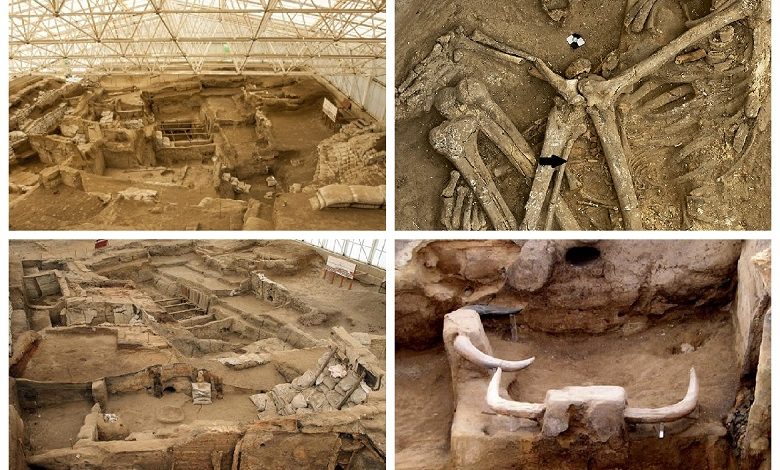Mystery of the Neolithic “megalopolis”: What sad history of Catalhoyuk teaches

About nine thousand years ago, there was an ancient city on the territory of modern Turkey in the Neolithic Age. It was so overpopulated that its inhabitants had to climb through the roofs into their homes. This sad history eloquently demonstrates what overpopulation in cities can lead to.
Archaeologists working at the excavation site of the famous Neolithic city of Catalhoyuk in southern Turkey are confident that it was one of the earliest major cities in the world. When ancient people began to transition to farming at its peak, Catalhoyük housed eight thousand people on its territory.
For a quarter of a century, archaeologists collected data on the ancient city and its inhabitants. During this period, they managed to discover the remains of 742 people.
Even though the city had a very high infant mortality rate and mortality of women in childbirth, the adult inhabitants of the city were originally in good health, were hardy, and were much better physically developed than modern people. They were well nourished, eating enough meat.
If the citizen did not die as a child, he could later live to forty, and some, as shown by studies of the remains, could live even more than seventy years.
To accommodate thousands of people in the relatively small area, houses in the ancient city were built side by side, so to get into their homes, a person had first to climb to the roof and reach the hole-in it. As a rule, there were no windows in the dwellings.
The walls of neighboring dwellings were not shared, but it was impossible to walk between them because the houses were so dense. Certain sections of the space not built-up with houses could serve as a dumping ground for general garbage.
By the way, there was a practice in the city of super structuring houses, in other words, building new ones on top of the old ones.
At the site of the ancient “megalopolis” found many damaged human heads, as well as semblances of shells, which, according to archaeologists, indicates an increased level of interpersonal violence. About one in four of the skulls found had been struck by such “projectiles,” which were balls of clay. The inhabitants used these balls and slingshots to shoot each other (they were also found during the excavations). Such intense aggression, which flourished in the society, scientists attribute it precisely to the steady growth of the population.
Incidentally, many of the victims were women and, judging by the artifacts found, most of them were struck in the head from behind.
In addition to the increased aggression, scientists discovered another negative consequence of this high population growth: a bacterial infection began to run rampant in the city. Nearly 33 percent of the skeletons showed signs of infection.
According to the lead author of the study, Clark Spencer Larsen, professor of anthropology at Ohio State University, the interior walls and floors of the houses have traces of human and animal fecal remains, which could also cause infections.
There were garbage pits, latrines, and animal pens adjacent to some of the houses. These may have caused unsanitary conditions and led to a rapid spread of infectious diseases,” Larsen explained.
Catalhoyuk was one of the world’s prototypes of a large city, and its inhabitants illustrate what happens when you put a lot of people together in a relatively small area for a long time,” Larsen sums up. “It’s very similar to the problems we face today in modern metropolitan areas.
Changes in the shape of cross-sections of the leg bones found in the skeletons indicate that community members had to walk much more in the later period of the city development than the early inhabitants. This is because the grazing areas had to be moved away from the city over time. Scientists believe that environmental and climatic changes also forced community members to move farther away from the settlement, mainly to get firewood. And this contributed to the eventual demise of Catalhoyuk.
Looking at the overcrowded Neolithic city, we certainly have something to think about,” the researchers say. Its history warns modern people against possible mistakes.




